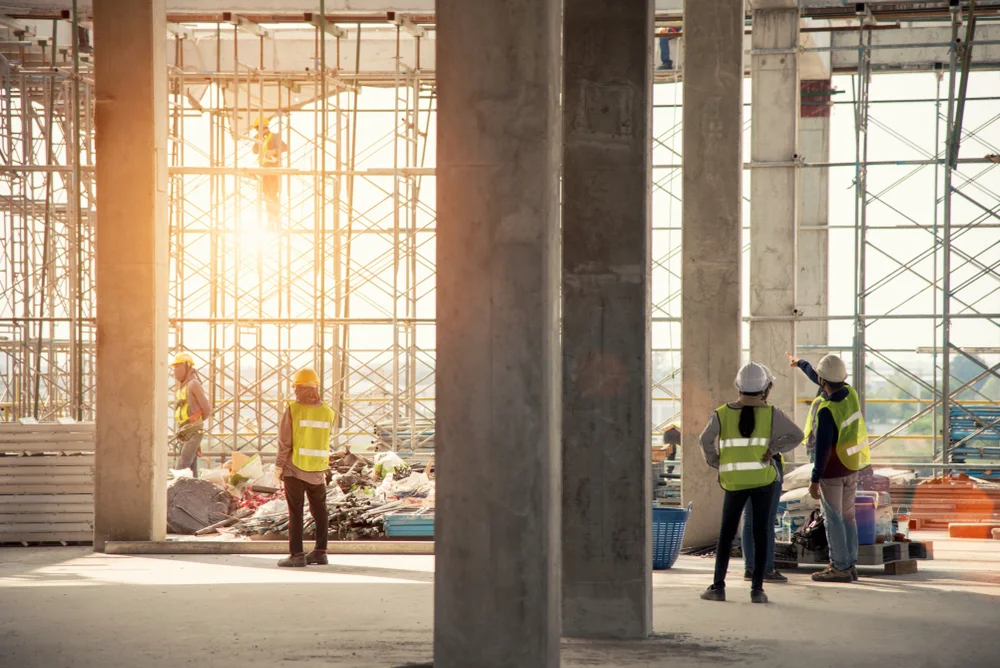When considering the carbon emissions that contribute to climate change, most people think of mobile exhaust created by vehicles. While vehicles play a role, buildings also create significant greenhouse gas emissions. In this article, we’ll dive deeper into what these emissions are and how businesses can properly account for them.
Breaking Down Building Emissions
The carbon emissions associated with buildings contribute to almost half of annual global CO2 emissions. These emissions can be broken down into two categories: operational carbon and embodied carbon.

Carbon emissions associated with buildings contribute to almost half of annual global CO2 emissions. These emissions can be broken down into two categories: operational carbon and embodied carbon.
Embodied Carbon
Embodied carbon is the carbon dioxide produced in the process of building a structure. This takes into account all of the materials used, their sourcing process, and transportation to the site. The most three most common building materials – concrete, steel, and aluminum – contribute to 23 percent of global carbon emissions. Once a building is constructed, there is no way to reduce its embodied carbon.
Green Impact knows that combatting climate change is a collective effort that will require creative solutions across multiple sectors. That’s why we offset unavoidable emissions from embodied carbon by purchasing carbon credits from the Green Bricks for Residential and Commercial Buildings Project by Native.
Based in Madhya Pradesh, India, this project produces fly ash bricks and Autoclaved Aerated Concrete (AAC) blocks. Native’s Green Bricks are lower in embodied carbon than traditional bricks because they use renewable local biomass and less energy during the manufacturing process and have a high insulation value that helps regulate indoor temperature.

Traditional clay bricks use coal and fuel oil as a source of energy, use more energy overall, and emit more greenhouse gases than the AAC process for concrete blocks and fly ash bricks.
Native’s Green Bricks are lower in embodied carbon than traditional bricks and have high insulation value.
Solutions for Embodied Carbon
The best way to handle embodied carbon is to conserve it. Make the most of your embodied carbon by retrofitting your old buildings instead of tearing them down. Demolition means embodied carbon wasted and construction means more embodied carbon created. If you absolutely need new construction, invest in green, high-performance infrastructure like LEED-certified buildings.
Carbon produced from building operations contributes to 27 percent of global emissions. Software tools like Net Zero Cloud make calculating these emissions easy and efficient.
Operational Carbon
Operational carbon refers to the emissions associated with the energy it takes to operate a building. Carbon produced from building operations contributes to 27 percent of global emissions. Calculating the energy consumption of a building requires tracking the natural gas and electricity usage and converting it to CO2 tons.
The amount of carbon a building uses depends on factors like the materials, size, location, and use of the building. Operational carbon emissions can be reduced over time by making energy upgrades and utilizing renewable energy sources.
Solutions for Operational Carbon
The best way to handle Operational Carbon is software tools like Net Zero Cloud. After all, you can’t monitor what you don’t measure. Net Zero Cloud provides a streamlined platform to make tracking emissions from operational activities across Scopes 1, 2, and 3 emissions easy and efficient.
To get started on understanding and reducing your company’s carbon footprint, schedule a free demonstration of Net Zero Cloud today to begin your journey towards a greener future.